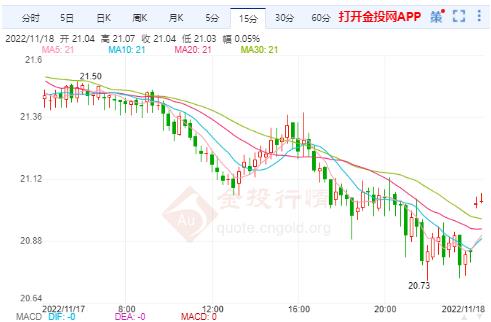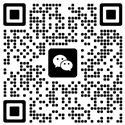外汇交易网官网(外汇交易门户)
Mastering Forex Trading: A Comprehensive Guide
Forex trading, commonly known as foreign exchange trading, is one of the most liquid and globally accessible markets. It involves buying and selling currencies from different countries with the aim of making a profit. Whether you're an experienced trader or a novice, understanding the intricacies of forex trading is essential for success. This guide will walk you through the essentials of forex trading, from the basics to advanced strategies, ensuring you are well-equipped to navigate the market.
Understanding Forex Trading
Forex trading operates on a 24-hour basis, providing traders with unparalleled flexibility. The market size is enormous, with a daily trading volume exceeding $4 trillion. This liquidity ensures that even small traders can impact the market. The major currencies involved are the US Dollar (USD), Euro (EUR), Japanese Yen (JPY), British Pound (GBP), and Canadian Dollar (CAD), among others. Traders engage in various activities, including spot trading, futures trading, and options trading.
Key terms in forex trading include:
Pips: The smallest price movement in a currency pair, typically the fourth decimal place (e.g., 0.0001).
lots: The size of a trade, often measured in standard lots (100,000 units), mini lots (10,000 units), or micro lots (1,000 units).
Swap: The interest rate differential between two currencies, affecting the cost of holding a position overnight.
Types of Forex Trading Tools
Forex trading offers a variety of tools to suit different trading styles and strategies:
1. Spot Trading: Buying and selling currencies for immediate delivery. It is the most common form of trading.
2. Futures Trading: Contracts that obligate the exchange of currencies at a predetermined price and date. Futures trading introduces leverage, amplifying potential gains or losses.

3. Options Trading: Contracts that give the right, but not the obligation, to buy or sell currencies at a specific price. Options trading is highly speculative and risky.
Risk Management Strategies
Risk management is crucial in forex trading. Traders should:
Set Stop-Loss Levels: Limit potential losses by closing positions when the price moves against them.
Use Leverage Carefully: While leverage can amplify profits, it can also magnify losses. Only trade with money you can afford to lose.
Maintain Diversification: Avoid putting all your capital into a single market or currency pair.
Psychological Preparation
Forex trading can be emotionally challenging, with winners and losers often experiencing significant stress. To succeed, traders should:
Develop a Trading Plan: Clearly defined goals, entry/exit rules, and risk management strategies.
Stay Informed: Keep up with economic indicators, political events, and market news that can impact currency prices.
Manage Expectations: Understand that forex trading involves uncertainty and be prepared for both short-term volatility and long-term trends.
Future Trends in Forex Trading
The forex market is constantly evolving, with emerging technologies and regulatory changes shaping the industry. Traders should stay informed about:
Quantitative Easing: Central banks' monetary policies and their impact on currency values.
Cryptocurrencies: The increasing integration of cryptocurrencies into the global financial system.
Algorithmic Trading: The rise of automated trading systems and the potential for increased market efficiency.
Conclusion
Forex trading is a complex yet rewarding endeavor that requires knowledge, experience, and discipline. By understanding the basics, utilizing various trading tools, and implementing sound risk management strategies, traders can navigate the market effectively. Remember, forex trading is not just about making quick profits; it's about long-term success and financial growth. For more detailed information and resources, visit our website at [forextrading.com](https://www.forextrading.com).
本文来源:本站责任编辑:
【温馨提示】转载请注明原文出处。 此文观点与零零财经网无关,且不构成任何投资建议仅供参考,请理性阅读,版权归属于原作者,如无意侵犯媒体或个人知识产权,请联系我们,本站将在第一时间处理。零零财经对文中陈述、观点判断保持中立,不对所包含内容的准确性、可靠性或完整性提供任何明示或暗示的保证,请读者仅作参考,并请自行核实相关内容。
客户对我们的评价
-
外汇学技术 来自湖州 的客户评价:
-
外汇交易 来自郑州的客户分享评论:
如何开展外汇交易?
一旦你发觉了一个挣钱的管理体系,再次演试测试。开启一个你早已科学研究过、合适你的外汇经纪人的账号。你能无期限完全免费数字货币交易。在您真实挣钱以前,您将期待持续2-6个月盈利。为何那么长?这两月還是最少程度的,最好是以4-6个月为总体目标。可是很多人都厌烦了,而不管你干什么,都不要在两月以前慢下来。
最终才去实践活动。这时,你将提前准备用测试的方式,以真正贷币为您的帐户盈利。假如你作出不一样的决策,由于你应用的是真实的钱,你将会会刚开始丧失它,但不要害怕回到原点。假 -
股指外汇交易 来自南宁的客户分享评论:
如何掌握止损点?
止损的原则是"一次赚的要够赔三次。"为什么要定这样一个原则,其实道理很简单,因为我不可能百分之百选对上涨的股票,因此,在选错股票时,必须防止股价下跌对既得利润和本金的侵蚀。
采用该原则时,只要我的选对率在25%以上就可以轻松实现资金的增值,而25%的准确率对于很多投资者来说是可以达到的。然后在该原则下,我设定每次赚钱时的小获利率为10%,顺势得出每次的大赔率不应超过3.3%,当亏损大于这一比例时,立刻止损卖出。最后还必须将该方法与形态分析相结合,在












设置止损:止损是投资者为减少损失而设置的自动卖出价格。初学者应始终为每笔交易设定止损点,以避免巨大的亏损。
分散投资:不要将所有资金投入到一个货币对中,分散投资可以降低市场波动带来的风险。
控制杠杆:尽管杠杆可以放大收益,但也会增加风险。初学者应使用较低的杠杆,逐步提高经验后再考虑增加杠杆倍数。